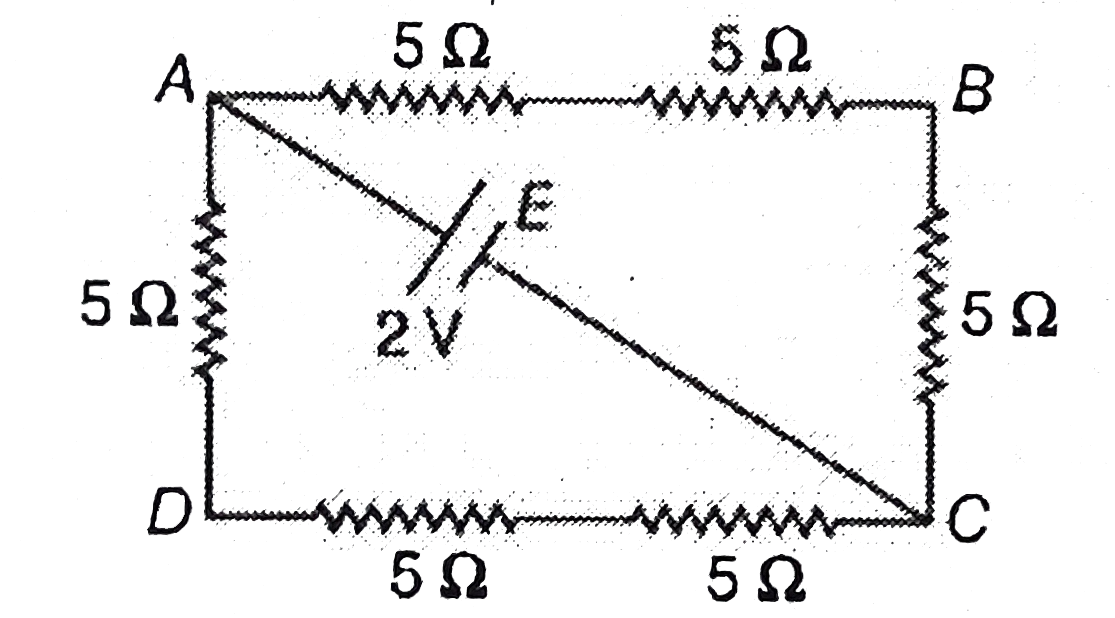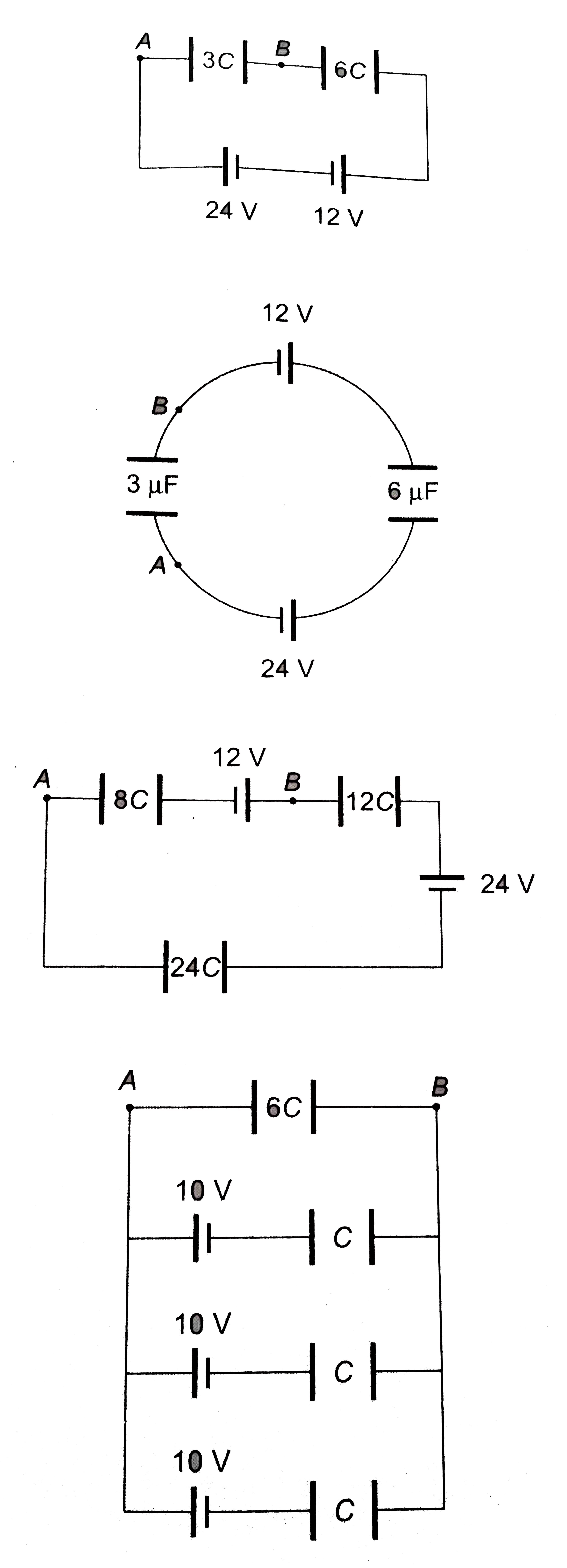A proton when released from point A moves to a point B in an electric field. Which of A and B is at a higher potential ? Explain.
If the potential difference between the points A and B is 5 V, find the amount of work done in moving a proton from B to A
(Take charge of proton as +1.6×10−19C).
The charge of proton, Q=+1.6×10−19C
The proton moves from Q to B, the point A is at higher potential than point B.
The P.D. between A and B is 5V.
We know
VA=wq⇒w=V×q=5V×1.6×10−19C=8×10−19J
Topper's Solved these Questions
Similar Questions
Find the potential difference between points A and B (VB−VA) in the network

View SolutionAn electron moves from a point A to a point B in an electric field and gains kinetic energy. Which of A and B is at a higher potential ? Explain.
If the potential difference between A and B is 1 volt, find the gain in kinetic energy of the electrons.
View Solution
Knowledge Check
The potential difference between points A and B from the figure is
 A2/3VB8/9VC4/3VD2 V
A2/3VB8/9VC4/3VD2 VA and B are two points in an electric field . If the work done in carrying 4.0C of electric charge from A to B is 16.0J, the potential difference between A and B is
AzeroB2.0VC4.0VD16.0VThe work done in moving a charge from one point to the other is 20J. If the potential difference between the points is 10V, the charge is:
A4.0CB2.0CC0.5CD1.0C
Find the potential difference between the points A and B.
(a)
If VA−VB=5V, find voltage across each capacitor.

View SolutionPotential difference between any two points B and A in an electrostatic field is the amount of work done in carrying ………… from …………. to ………………….. .
View SolutionA charge of 5 C is moved between two point is an electric field and 20 J of work was done to do so. Calculate the potential difference between the two points.
View SolutionIf 10 J of work is to be done in moving a charge of -200C from A to B, which of the two points is at higher potential ? What is the potential difference ?
View SolutionAn electron released from rest at a point A moves towards a nearby point B. The potential at A is higher than the potential at B.
View Solution